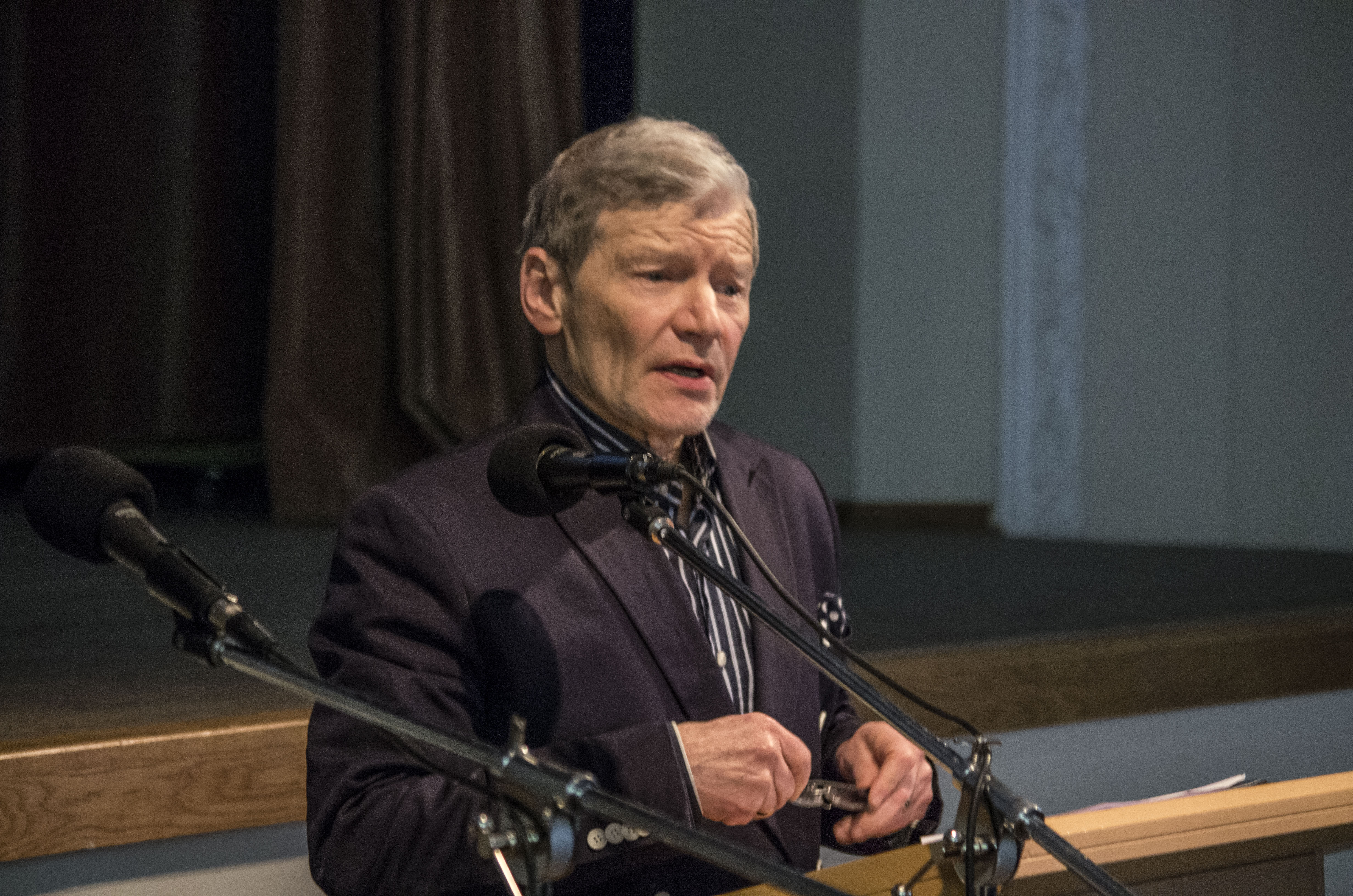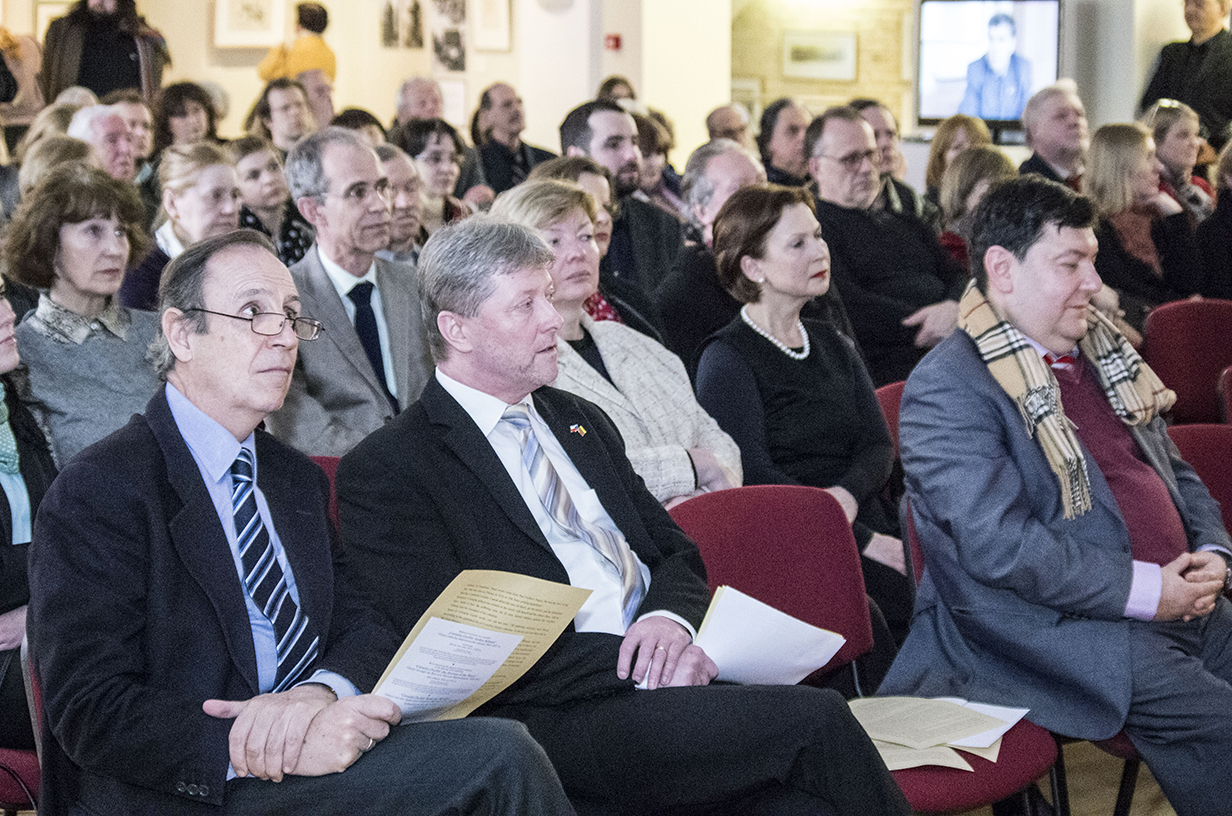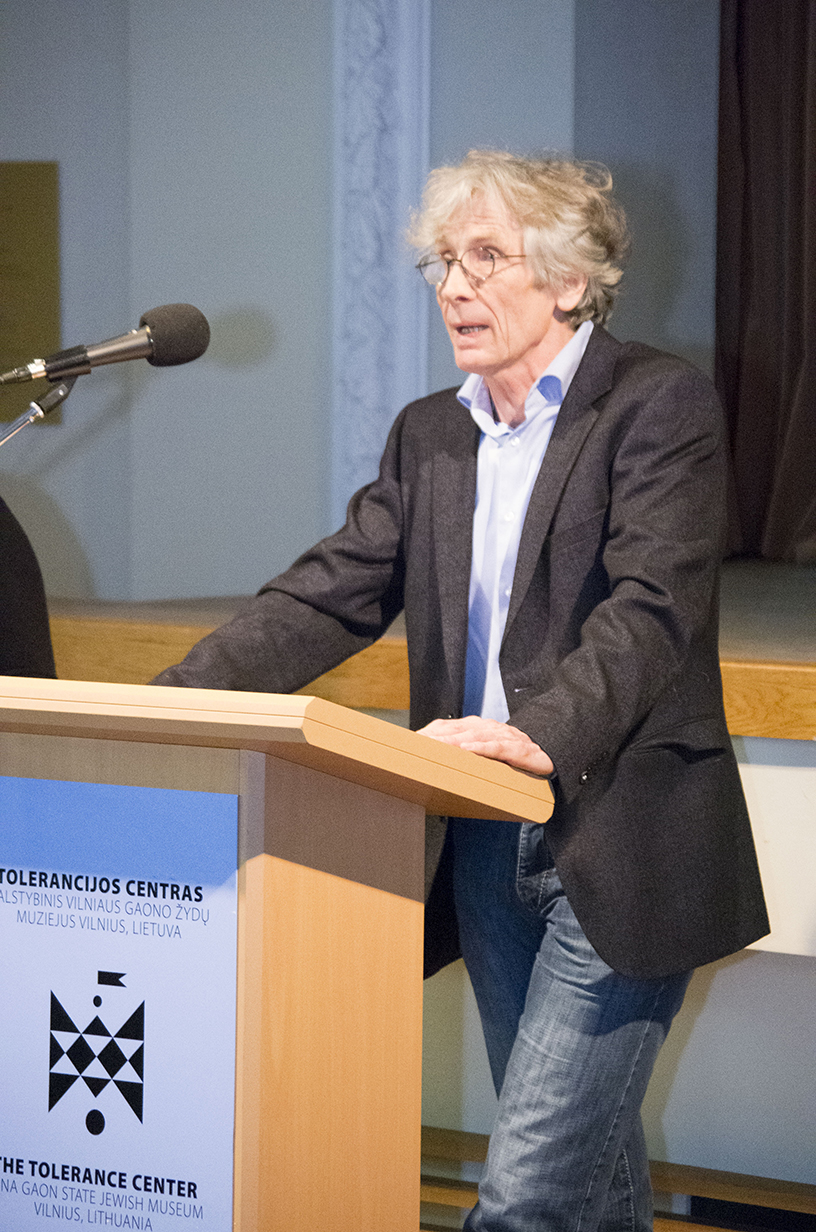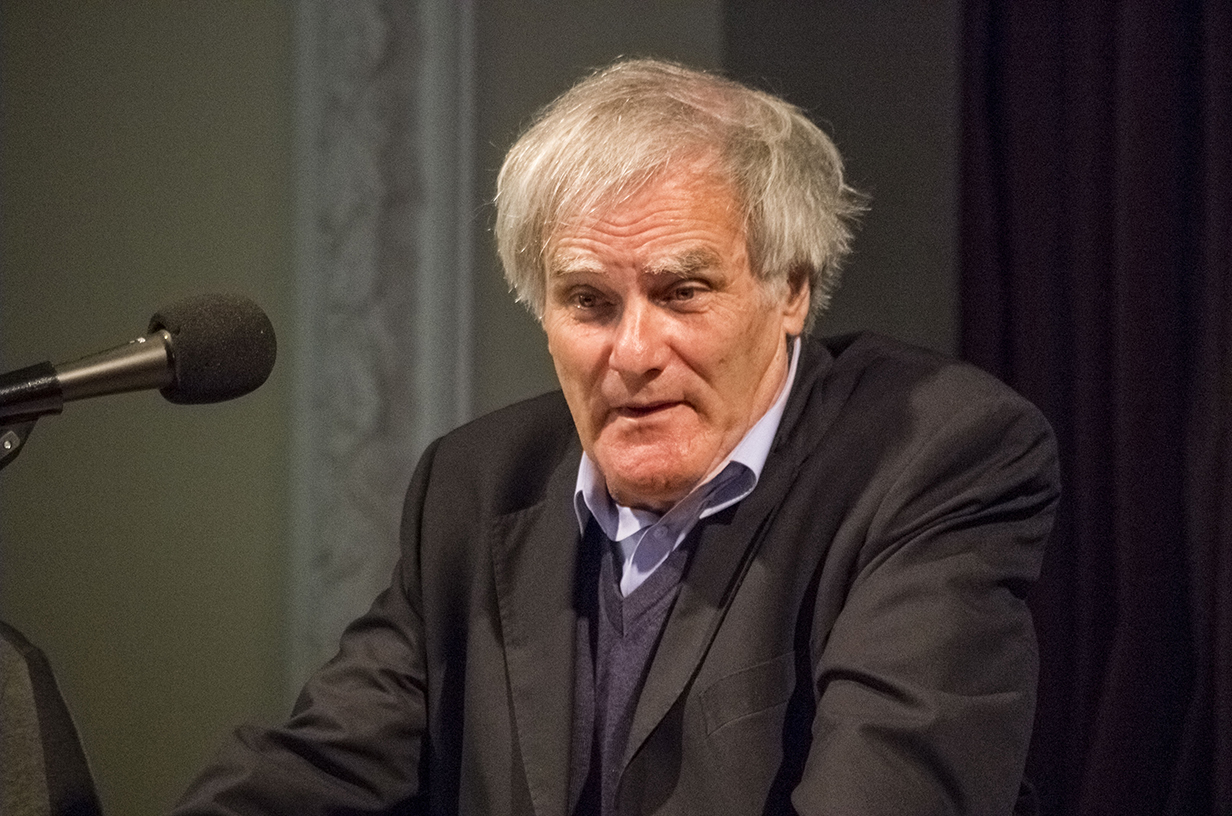|
The exhibition „Cornelia Gurlitt: the Journey of the Heart“. Vilnius through the Eyes of a German Expressionist: 1915-1917 was opened at the Tolerance Center of the Vilna Gaon State Jewish Museum (Naugarduko Str. 10/2, Vilnius) on the 26th of March, 2015. Lithographs and drawings by Cornelia Gurlitt (1890-1919) reveal the drama of an artist, who served as the sister of mercy at Vilnius’ German military hospital during the years of WWI. Her life and work are presented in the background of Vilnius views, captured by Generalfeldmarshall Hermann von Eichhorn army‘s photographers, as well as through the thoughts of her contemporaries.
The exhibition is based on the collection of sixteen drawings and lithographs by Cornelia Gurlitt, donated to the Museum by Dr. Hubert Portz, owner of Kunsthaus Desiree Art Gallery in Germany as well as on 7 additional works from private collections. The biggest part of the works is created in Vilnius, „the Eastern front“, in 1917, where Cornelia Gurlitt served as a sister of mercy, starting from 1915. According to Markas Zingeris, Director of the Vilna Gaon State Jewish Museum, a group of talented artists and writers, among whom were Hermann Struck and Arnold Zweig, served in the ‘Eastern front’ of the German occupation army. They held exhibitions in Vilnius and Kaunas and wrote articles for publications of the Kaiser army. Later on they became famous and earned their place in the history of art and literature. But Cornelia Gurlitt, who died so young, was only seldom mentioned in the media during WWI and after; she has only recently been discovered.
| |
|
 |
 |
| Director M. Zingeris greets the audience |
Director M. Zingeris presents the acknowledgement letter for Patron H. Portz |
The opening evening was an exceptional one: we were not sure, if one of the guest speakers, Professor from Germany Julius Schoeps will arrive on time. Lithuania’s Cultural Attache in Germany Gabrielė Žaidytė had to make a miracle to bring him to the opening of the exhibition at the Tolerance Center, several minutes after their plane landed in Vilnius airport. Markas Zingeris Director of the Vilna Gaon State Jewish Museum delivered the greeting word: he spoke not only about the exceptional Cornelia’s talent, but also about the history of her infamous brother and the drama of the Gurlitt art collection. Director presented the Acknowledgment letter for the main patron and the begetter of the exhibition Dr. Hubert Portz, thanking him for the artist’s works, donated to the Museum back in October, 2014.
H. E. Jutta Schmitz, Ambassador of the Federal Republic of Germany to Lithuania, greeted the audience, while remembering the common history of Lithuania and Germany, current partnership and the black history page, related to Holocaust, as well as the Kaizer’s Army actions in the territory of Lithuania during WWI.
| |
|
 |
 |
| Guests of the event: (from the left) Ambassador of the Kingdom of Spain, Ambassador of the Czech Republic B. Mazanek, member of the Seimas of Lithuania E. Zingeris, Vice-Minister of Culture of the Republic of Lithuania P. Poderytė (in the second row) |
Greeting word of the Ambassador of Germany H. E. Jutta Schmitz |
| |
|
Dr. Hubert Portz also delivered the speech. He was happy for the fact that Cornelia finally is back to Vilnius, her city of yearning, pointing that this exhibition is the basis for one more new exhibition, which could be brought to Vilnius from Bern Museum in Switzerland. In the end of 2014 Bern Museum (Switzerland) published the list of the art works of the collection, inherited from Cornelius Gurlitt, the nephew of Cornelia Gurlitt and the son her brother Hilderbrand Gurlitt, who was one of infamous Nazi looted art collectors. It became clear that in his secret collection Hilderbrand Gurlitt saved 138 his sister‘s artworks, dated from 1914 to 1919. (Please find full H. Portz speech here).
| |
 |
| Dr. Hubert Portz is happy Cornelia returned to Vilnius through her artworks |
Professor Julius Shoeps, German historian and political scientist, Director of Moses Mendelson Jewish History Center, who successfully arrived to the opening on time, shared the interesting personal fact: on the morning of the very same day, he discovered that his family line, coming from the line of Cornelia’s Jewish grandmother, connects him with Gurlitt family. For this reason he found the personal interest into this exhibition.
| |
 |
| Prof. Julius Schoeps |
| Although one more exceptional guest became the sensation of the evening: Cornelia’s younger brother’s Wilibald’s grandson Christoph Gurlitt also came to the opening ceremony. Ch. Gurlitt did not plan to make the public appearance, but he was so inspired by the spirit of the opening, as well as the speeches delivered, that he decided to greet the audience, expressing his thanks for this happening. Ch. Gurlitt invited his new relative Prof. J. Shoeps to rise the glass of wine for their newly discovered family roots. Wine for the opening was specially brought from “Stern” wine-cellars, located in South-western Germany, Hochstadt village, where Dr. Hubert Portz lives. |
| |
 |
| The surprise of the evening – the grandson of Cornelia‘s brother Christoph Gurlitt |
Cornelia Gurlitt was already known as talented artist in Germany, in 1914, where she held two exhibitions. Artist met the love of her life, art critic and editor Paul Fechter in WWI years, in Vilnius. Love became one of the reasons, making her talent to blossom. “This woman was fuelled by an energy of internal tensions that were somewhat overwhelming. Although her name and abilities only became known to the small circle of people who met her in life, this woman was perhaps the most brilliant talent of the young generation of Expressionists. What she produced in the way of drawings, lithographs and paintings was among the most powerfully expressive art of those years and above all, was hardly paralleled in the achievements of the female artists of the era“, wrote Paul Fechter in his art history book, in 1949.
Cornelia Gurlitt was a person of her time: she embraced expressionism not only as a means of artistic expression but also as an existential philosophy; this worldview was fully in line with the German expressionism; the person/creator perceives her loneliness and separation, her inability to solve social problems. Cornelia’s anxiety and inner contradictions are transformed into works characterised by twisted, roughly stylised forms, and broken lines. The artist exposes in this manner not only her work but her inner state too.
Thanks to Dr Hubert Portz’s diligent research, through Cornelia’s eyes we can see wartime Vilnius and the Kaiser’s 10th Army under the command of Generalfeldmarschall Hermann von Eichhorn, which was in charge of the Oberost province from the end of 1915. In his article Affairs of the Heart (printed in the catalogue of the exhibition) Dr Portz published excerpts from letters of the painter conveying the reality of Vilnius of that period. In 2010 the collection of authentic digitalised photos of the Kaiser’s Army and the sights of Vilnius was donated to the museum by Rolf Dyckerhoff from Wiesbaden (Germany), great-great-grandson of Hermann von Eichhorn.
Exhibition will be opened at the Tolerance Center (Naugarduko Str. 10/2, Vilnius) until the 18th of September, 2015.
 |
 |
| |
|
 |
 |
| The opening of the exhibition |
Press conference was held before the opening of the exhibition. Patron of the exhibition Dr. Hubert Portz, Director of the Vilna Gaon State Jewish Museum and the Head of the Tolerance Center, Curator of the exhibition Ieva Šadzevičienė answered the journalists‘ questions on the subject. (Photos from the conference).
|


